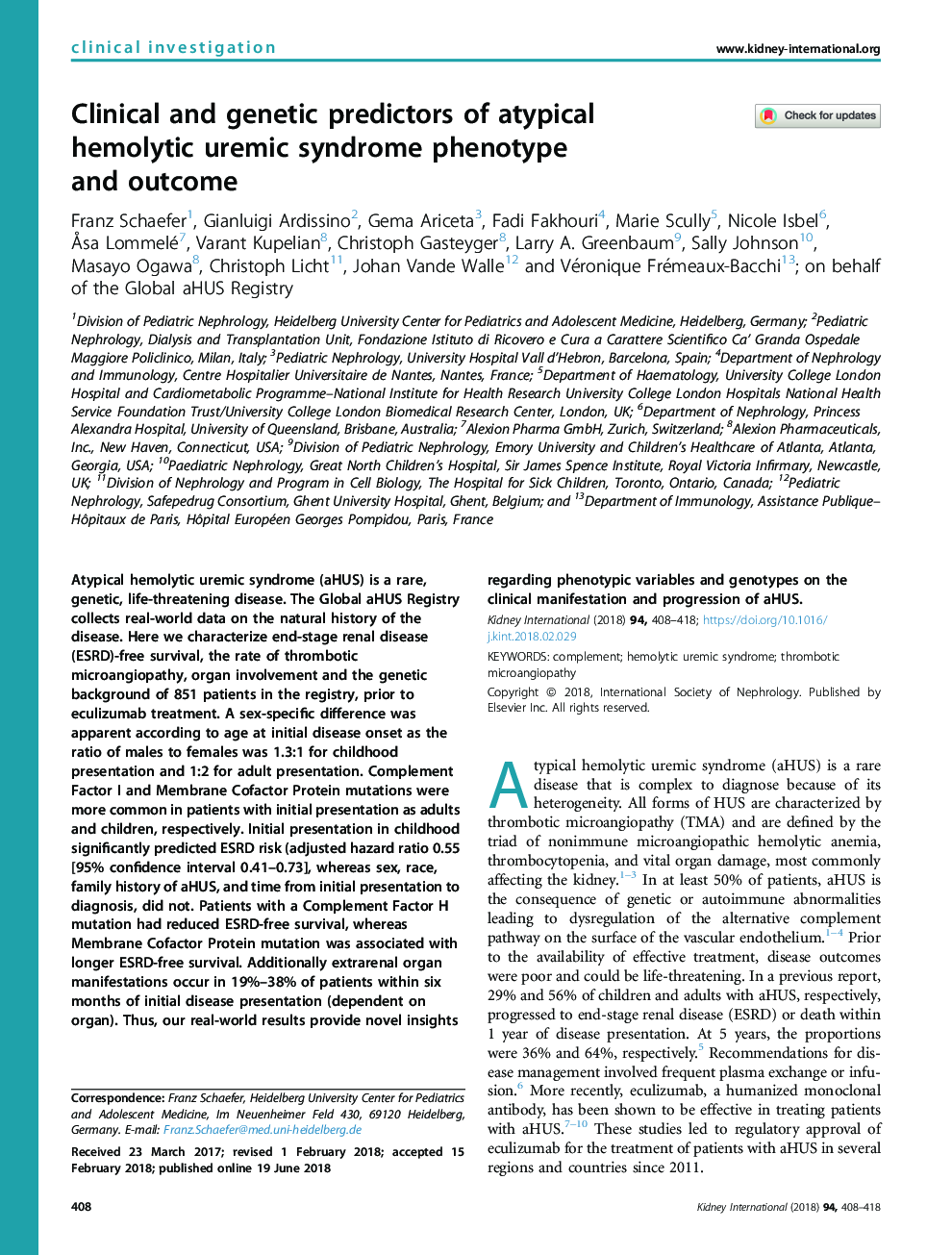| کد مقاله | کد نشریه | سال انتشار | مقاله انگلیسی | نسخه تمام متن |
|---|---|---|---|---|
| 8772549 | 1599136 | 2018 | 11 صفحه PDF | دانلود رایگان |
عنوان انگلیسی مقاله ISI
Clinical and genetic predictors of atypical hemolytic uremic syndrome phenotype and outcome
دانلود مقاله + سفارش ترجمه
دانلود مقاله ISI انگلیسی
رایگان برای ایرانیان
کلمات کلیدی
موضوعات مرتبط
علوم پزشکی و سلامت
پزشکی و دندانپزشکی
بیماریهای کلیوی
پیش نمایش صفحه اول مقاله

چکیده انگلیسی
Atypical hemolytic uremic syndrome (aHUS) is a rare, genetic, life-threatening disease. The Global aHUS Registry collects real-world data on the natural history of the disease. Here we characterize end-stage renal disease (ESRD)-free survival, the rate of thrombotic microangiopathy, organ involvement and the genetic background of 851 patients in the registry, prior to eculizumab treatment. A sex-specific difference was apparent according to age at initial disease onset as the ratio of males to females was 1.3:1 for childhood presentation and 1:2 for adult presentation. Complement Factor I and Membrane Cofactor Protein mutations were more common in patients with initial presentation as adults and children, respectively. Initial presentation in childhood significantly predicted ESRD risk (adjusted hazard ratio 0.55 [95% confidence interval 0.41-0.73], whereas sex, race, family history of aHUS, and time from initial presentation to diagnosis, did not. Patients with a Complement Factor H mutation had reduced ESRD-free survival, whereas Membrane Cofactor Protein mutation was associated with longer ESRD-free survival. Additionally extrarenal organ manifestations occur in 19%-38% of patients within six months of initial disease presentation (dependent on organ). Thus, our real-world results provide novel insights regarding phenotypic variables and genotypes on the clinical manifestation and progression of aHUS.
ناشر
Database: Elsevier - ScienceDirect (ساینس دایرکت)
Journal: Kidney International - Volume 94, Issue 2, August 2018, Pages 408-418
Journal: Kidney International - Volume 94, Issue 2, August 2018, Pages 408-418
نویسندگان
Franz Schaefer, Gianluigi Ardissino, Gema Ariceta, Fadi Fakhouri, Marie Scully, Nicole Isbel, Ã
sa Lommelé, Varant Kupelian, Christoph Gasteyger, Larry A. Greenbaum, Sally Johnson, Masayo Ogawa, Christoph Licht, Johan Vande Walle,